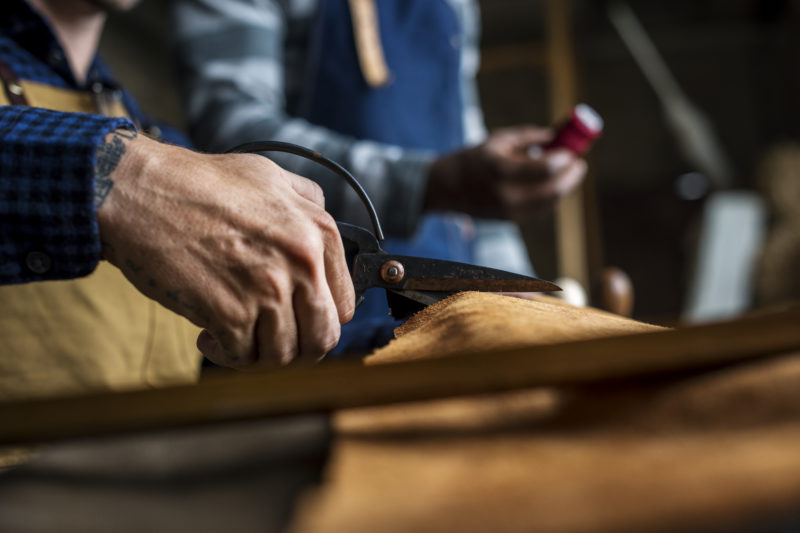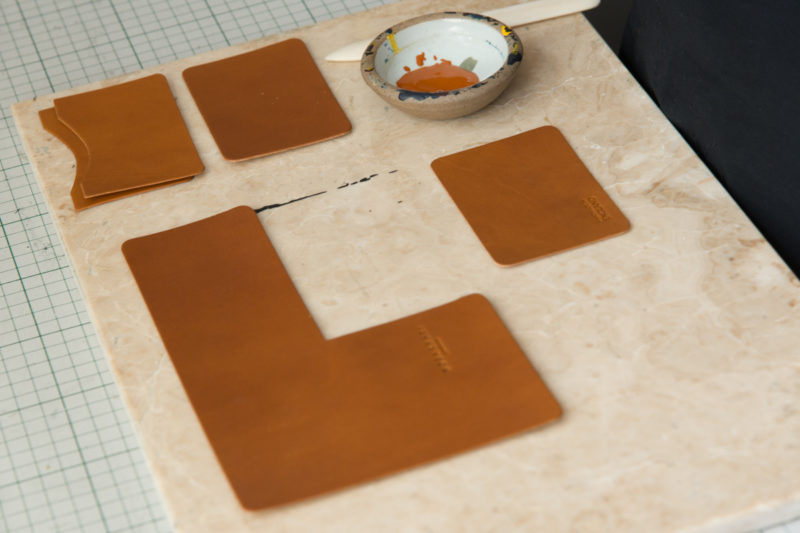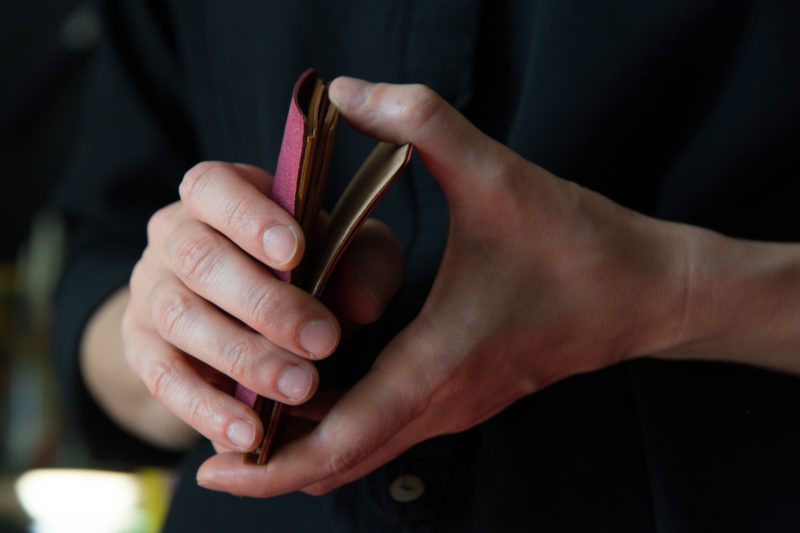A Definitive Guide to Leather Grades and Finishes
With a variety of leather quality to choose from, one must at least understand the basics of leather grades and their finishes before buying a quality leather that will last you for generations to come.
So, if you are wondering why your grandpa’s leather jacket is still kicking through all those winters, keep on reading as we explain all about different leather grades and leather finishes.
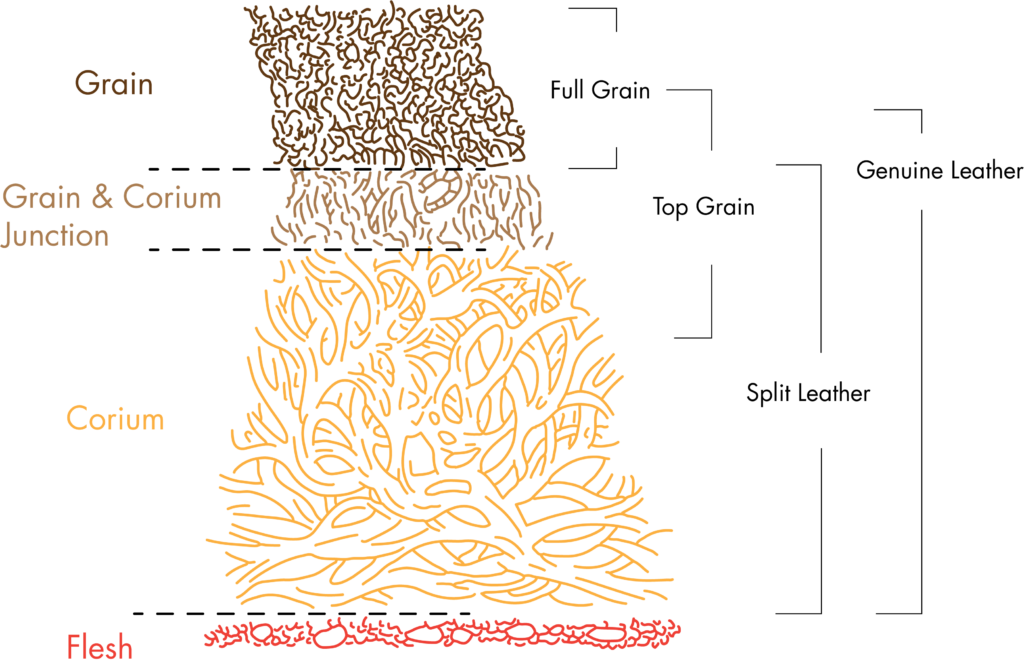
Understanding Leather Grades:
There are five different leather grades.
- Full-Grain Leather
- Top-Grain Leather
- Corrected-Grain Leather
- Genuine Leather
- Bonded Leather
All leather grades undergo some process of treatment and tanning. Determining leather grades is easier than most people make out of it. Indeed it may take some time to get familiar with it, but it’s not rocket science. First and foremost, we must understand the concept of “Splitting of the Hide”.
The rawhide can range in thickness anywhere from 6mm to 10mm. The leather craftsmen divide the hide into two parts; the top cut and the bottom cut.
Let’s say you want to make a leather jacket of about 2.2mm thick, but the rawhide is closer to 5mm in thickness. Therefore, after splitting leather into two parts, the top cut contains all of the full-grain (high quality) of the hide, and the bottom portion is a leftover, which can be split further into low-quality leather.
Now, let’s talk about leather grades in more detail:
Full-Grain Leather
Full-grain leather is the best quality of the grades as it includes all grain and comes from the top layer of the hide. This leather comes in the purest of forms, flaunting all its natural marks and imperfection. This high-quality leather is durable and sturdy enough for structure yet soft to touch. Full-grain leather lasts a very long time and ages well as it does not wear out quickly. And, over time, it develops a lovely patina that protects the top layer from damage and gives it a wonderful character. You can use full-grain leather to make iconic fashion pieces like leather jackets, bespoke bags, leather accessories like wallets and belts.
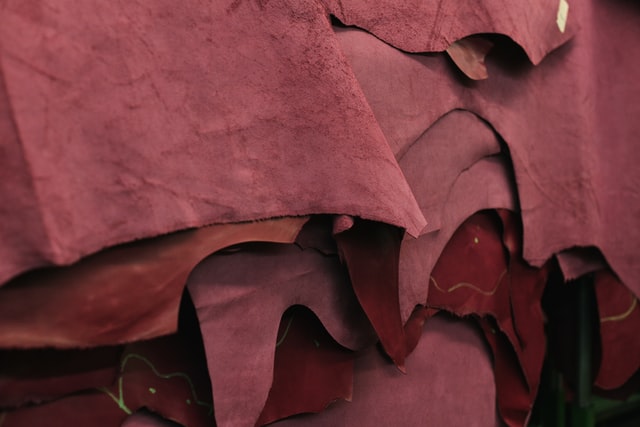
Top-Grain Leather
The second in place, top-grain leather, more flexible and thinner as the top layer of the skin is split to remove any blemishes and imperfections. The surface of the leather is sanded and finished off with a coating to give it an exotic leather aesthetic. But, there’s a catch. All the sand and layering do make the leather feel more plasticky and less breathable.
Top-grains leathers surely are sturdy, and durable but aren’t well-equipped to age well like the full-grain leathers cause the fibres which played a part of its durability are sand away, making it stretchy overtime. Top grains are versatile with colours and have water-resistant properties making them favourable to manufacture high-end bespoke shoes and jackets.
Corrected-Grain Leather
Shifting further down the leather grade spectrum, we have corrected-grain leather made out of the bottom cut part of the rawhide. These leather are an excellent option for making the pigmented leather cause of its low quality. Corrected-grain leather is sand and applied with an artificial coat to give it a look and feel of real leather and various exotic skins. Corrected-grain leather is used in mass-manufacturing of affordable leather products. You can find corrected-leather all over the world easily.
Genuine Leather
Most of the world doesn’t even consider this a real leather. The source of this leather is from the leftovers of rawhide. A vast audience worldwide uses genuine leather also though the durability is not its greatest strength. Besides, manufacturers benefit hugely due to its availability and affordability.
Bonded Leather
Bonded leathers are all the scraps left out from genuine leather, making it the lowest-graded leather in the spectrum. Manufactures grind and blend the scraps with adhesive because it holds less to none endurance. Furthermore, it can be legally marketed as ‘Genuine Leather’ as scraps from it are in use. In addition to that, manufacturers use an artificial coating to disguise its true nature.
It’s not just about the types of leather you need to know, but the leather finishes also play a vital role in the quality and durability of the leather.
We are here to walk you through the final segment of the leather guide so that you can get your hands on the perfect leather next time you look for a leather item.
There are three most used leather finishes:
- Aniline
- Semi-Aniline
- Pigmented
Let’s go into the details.

Aniline
Aniline leather is a type of leather coloured exclusively with soluble dyes. The dye adorns the leather without producing the uniform surface of a topcoat paint or insoluble pigmented sealant. One of the easy ways to distinguish aniline leather is to check the hide’s natural characteristics, such as wrinkles and lines, irregularities in the grain structure and variations of scratches and cuts. Aniline leathers are the pinnacle of luxury, so make sure you get the quality you deserve.
Semi-Aniline
Semi-aniline leather combines the look and feel of natural leather with comfort and durability. A small amount of pigment and a water-based colour mixture helps to finish the dye. This treatment allows this leather to become soft and supple yet more resistant to heavy wear.
Pigmented
The purpose of pigmented leather is to protect the leather surface from wear and staining. Then, using a pigmented resin to build a bond on the surface of the hide. Leather that pigments will not be as soft as Aniline, but will become more lasting against the protected coat. If the pigmented layer is thicker than 0.15 mm then, according to the consumer protection legislation, you cannot sell it in the UK.
KEEP AN EYE OUT FOR UNPROCESSED LEATHER GRADES
The process of turning hides into leather involves, skinning the cow and taking it to a tannery. Excess meat, fat and hair are separated in the tannery. Then the hides are tanned with oils, preservatives and dyes in the drum.
While in the drums, it can take up to 10 hours for the leather to absorb all the tanning solution to form well-preserved leathers. Then the hides are pressed, hanged and finished.
The drum is an essential step in the tanning process. Some tanneries cut corners by cutting the tumbling time way below the required time such that they can process more leathers in less time and make more money. Doing this doesn’t allow the oils and preservatives to penetrate the hide properly. The drum ensures that the leather is tanned only on the surface.
Furthermore, the products that tan the hides can be costly. Some tanneries will cut costs by buying cheaper solutions to tan. Using affordable products can have a significant effect on the polished leather finish, which might cause the leather to fade and crack in too much sunlight.
Buying leather can be challenging, especially when there are many types of leather. So it is best to know as much as you can about leather so that you can better avoid those who pass off synthetic leather for genuine leather. We hope this guide will help you choose your next leather wisely.
Additionally, please refer to our points of reference for further study and guides to leather types.
- Leather buying guide
- Leather Slipper Shoes
- Leather grading the different varieties of leather
- Leather guide
- How to examine the quality of leather goods
- Identify types of leather finishes
RELATED ARTICLES
HOW TO CREATE A BESPOKE CUSTOM-MADE LEATHER WALLET
FIVE TIPS ON RECOGNISING GENUINE LEATHER FROM FAKE LEATHER
WHY LEATHER MANUFACTURERS CARE WHEN SOURCING THEIR GOODS
A BRIEF HISTORY OF LONDON’S LEATHER INDUSTRY AND WHAT WE HAVE LEARNT FROM IT
LUXURIOUS LEATHER CHECKLIST: WHAT TO KNOW BEFORE YOU BUY
7 PLACES TO FIND QUALITY GENUINE LEATHER IN LONDON
8 BENEFITS OF MANUFACTURING YOUR LEATHER GOODS LOCALLY
HOW TO STORE YOUR LEATHER GOODS


